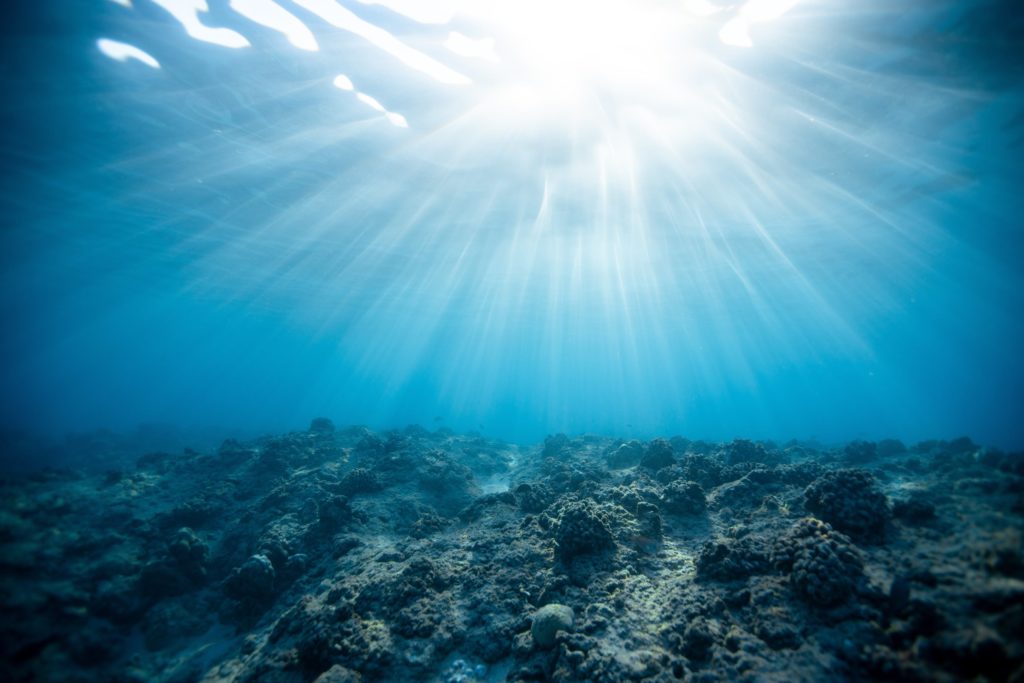Scientists urge priority action on hundreds of surviving reefs.

The majority of 2500 reefs surveyed in a major international exercise retain the coral species that give them their distinctive structure.
More than 80 marine scientists, including several from Australia, contributed to the study, which is published in the journal, Nature Ecology and Evolution.
The researchers found an unexpected resilience among the coral communities. In particular, even after the damage caused by severe heat stress during the 2014-17 El Niño event, the authors identified nearly 450 reefs in 22 countries across the Indo-Pacific that survived in climate “cool spots”.
The finding means that urgent local action to protect the coral communities must be aligned with global measures to fight climate change.

Image credit: Macquarie University
“Being able to allocate spatially explicit strategies to save reefs is a big leap in informing actionable policies,” says Dr Joseph Maina, senior lecturer in spatial information science at Macquarie University in New South Wales and a co-author of the study.
He adds that agricultural activity on land showed up as a strong influence of reef health – revealing a target for damage control.
“We now need to determine key thresholds and specific actions that can be taken on land to reduce pollution and counter land-based impacts on coral reefs. This will give them a better chance of surviving climate change.”
Further Australian input into the study came from based at James Cook University, the Australian Institute of Marine Science, the ARC Centre of Excellence for Coral Reef Studies and the Sydney Institute of Marine Science.
The survey, which was led by the US Wildlife Conservation Society (WCS), constitutes the largest study of its kind ever conducted. It identified where and how to save coral reef communities in the Indo-Pacific. The study outlines three viable strategies that can urgently be enacted to help save coral reefs that are threatened by climate change and human impacts.
The findings revealed that the majority of reefs had functioning coral communities, by assessing the living cover of architecturally complex species that give reefs their distinctive structure.
The landmark publication presents a conservation framework of three management strategies – dubbed protect, recover and transform – to safeguard reef ecologies and ecosystem services into the future.
“The good news is that functioning coral reefs still exist, and our study shows that it is not too late to save them,” says Dr Emily Darling, lead author of the study and WCS Conservation Scientist and leader of the organisation’s global coral reef monitoring program.
“Safeguarding coral reefs into the future means protecting the world’s last functioning reefs and recovering reefs impacted by climate change. But realistically – on severely degraded reefs – coastal societies will need to find new livelihoods for the future.”
Good news on the future of corals has become rare in the twenty-first century, because increasing carbon emissions and human impacts of overfishing, pollution and unsustainable development have led to predictions of a bleak future for tropical reefs and the millions of people who depend on them. The Indo-Pacific in particular, a hotspot of coral reef biodiversity, has been devastated by periods of severe heat stress and mass coral bleaching events in 1983, 1998, 2005, 2010, and most recently in the world’s longest, largest and most intense bleaching event in 2014-2017.
The study also identifies the minimum requirements to save functioning reefs. This required evaluating the impacts of 20 environmental, climatic, and human-caused stressors on reef-building corals. The authors found that higher abundances of framework corals, the species that build the backbone of coral reefs, occurred on reefs with fewer climate shocks and longer recovery windows. Higher coral abundances were also found farther from coastal populations and their associated markets and agricultural impacts.
The authors’ findings helped to formulate the three strategic choices of management for the reefs.
Protect: 17 per cent of coral reefs in the study’s dataset had functioning coral reefs and occurred in a climate ‘cool spot’ during the 2014-2017 El Niño. The reefs are found in 22 countries from East Africa to South East Asia, the Coral Triangle, and the Pacific. These findings call for an international network of coral reef conservation to save the world’s last functioning coral reefs.
Recover: The second strategy is to promote rapid coral recovery where reefs (54 percent of those examined in the study) were previously functioning but have been recently impacted by the 2014-2017 coral bleaching event.
Transform: The third strategy recognizes that some coastal societies will need to transform away from dependence on reefs that are no longer functioning (28 percent of the reefs analysed fell into this category).
The study’s findings stress that strategic local management can play a role in helping protect corals through tools such as marine protected areas or other management restrictions that reduce threats and keep coral reefs above functional thresholds. However, the authors noted that local management can complement but not replace the need for worldwide efforts to limit carbon emissions.
“Saving reefs will require combining local and global efforts, such as reducing local dependence on reef fish to maintain a reef’s important functions while also reducing carbon emissions to keep warming below 1.5 degrees Celsius,” says Dr Tim McClanahan, WCS Senior Conservation Zoologist and co-author of the study.
The paper is available here: https://www.nature.com/articles/s41559-019-0953-8

